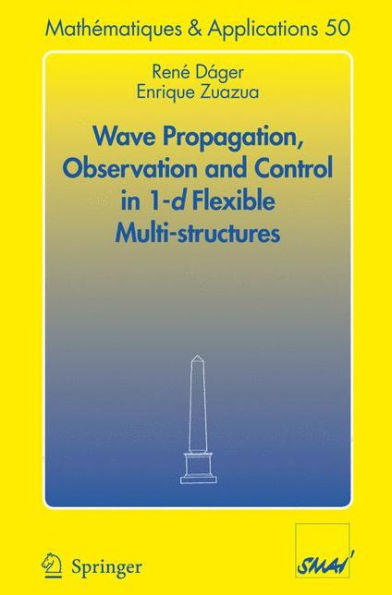Wave Propagation, Observation and Control in 1-d Flexible Multi-Structures
This book is devoted to analyze the vibrations of simplified 1? d models of multi-body structures consisting of afinite number of flexible strings d- tributed along planar graphs. We first discuss issues on existence and uniquenessof solutions that can be solved by standard methods (energy arguments, semigroup theory, separation of variables, transposition,...). Then we analyze how solutions propagate along the graph as the time evolves, addressing the problem of the observation of waves. Roughly, the question of observability can be formulated as follows: Can we obtain complete information on the vibrations by making measu- ments in one single extreme of the network? This formulation is relevant both in the context of control and inverse problems. Using the Fourier development of solutions and techniques of Nonharmonic Fourier Analysis, we give spectral conditions that guarantee the observability property to hold in any time larger than twice the total length of the network in a suitable Hilbert space that can be characterized in terms of Fourier series by means of properly chosen weights. When the network graph is a tree, we characterize these weights in terms of the eigenvalues of the corresponding elliptic problem. The resulting weighted observability inequality allows id- tifying the observable energy in Sobolev terms in some particular cases. That is the case, for instance, when the network is star-shaped and the ratios of the lengths of its strings are algebraic irrational numbers.
1129016863
Wave Propagation, Observation and Control in 1-d Flexible Multi-Structures
This book is devoted to analyze the vibrations of simplified 1? d models of multi-body structures consisting of afinite number of flexible strings d- tributed along planar graphs. We first discuss issues on existence and uniquenessof solutions that can be solved by standard methods (energy arguments, semigroup theory, separation of variables, transposition,...). Then we analyze how solutions propagate along the graph as the time evolves, addressing the problem of the observation of waves. Roughly, the question of observability can be formulated as follows: Can we obtain complete information on the vibrations by making measu- ments in one single extreme of the network? This formulation is relevant both in the context of control and inverse problems. Using the Fourier development of solutions and techniques of Nonharmonic Fourier Analysis, we give spectral conditions that guarantee the observability property to hold in any time larger than twice the total length of the network in a suitable Hilbert space that can be characterized in terms of Fourier series by means of properly chosen weights. When the network graph is a tree, we characterize these weights in terms of the eigenvalues of the corresponding elliptic problem. The resulting weighted observability inequality allows id- tifying the observable energy in Sobolev terms in some particular cases. That is the case, for instance, when the network is star-shaped and the ratios of the lengths of its strings are algebraic irrational numbers.
69.95
In Stock
5
1

Wave Propagation, Observation and Control in 1-d Flexible Multi-Structures
230
Wave Propagation, Observation and Control in 1-d Flexible Multi-Structures
230Paperback(2006)
$69.95
69.95
In Stock

Product Details
| ISBN-13: | 9783540272397 |
|---|---|
| Publisher: | Springer Berlin Heidelberg |
| Publication date: | 10/06/2005 |
| Series: | Math�matiques et Applications , #50 |
| Edition description: | 2006 |
| Pages: | 230 |
| Product dimensions: | 6.10(w) x 9.25(h) x 0.02(d) |
From the B&N Reads Blog
